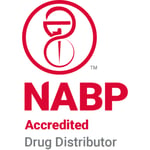The unfortunate reality for hospital pharmacies is that plenty of drugs end up in the trash when they expire before they can be dispensed. Of course, that’s wasteful and costly, but deemed necessary by the FDA to protect patient safety.
When hospital pharmacies must purchase medications in quantities of 50, 100, or more, they’re often faced with a conundrum: they might only use five doses of this medication in a year, but it’s only available in much larger quantities for purchase. Either they go without and risk patient care and safety, or they purchase way more than they need knowing 95% might end up in the trash.
 This kind of waste can cost hospital pharmacies up to $1,700 per patient bed per year, according to research by Safecor Health. But embracing a low unit of measure (LUM) approach, in which the supplier offers individual units or small batches of units rather than bulk quantities, can drastically reduce the wasted drugs tossed out by hospital pharmacies.
This kind of waste can cost hospital pharmacies up to $1,700 per patient bed per year, according to research by Safecor Health. But embracing a low unit of measure (LUM) approach, in which the supplier offers individual units or small batches of units rather than bulk quantities, can drastically reduce the wasted drugs tossed out by hospital pharmacies.
And even though the LUM pharmacy supply approach seems counterintuitive to the cost savings of bulk buying, it saves money since it doesn’t require ordering mass quantities for drugs that aren’t often dispensed. Hospitals with lean approaches to medication ordering can experience savings of tens of thousands of dollars per year.
LUM in the hospital pharmacy environment can also help optimize storage, reduce inventory costs, and decrease in-house repackaging needs. And instead of delivering to central storage locations — or distribution hubs for health systems that manage multiple hospital pharmacies — these LUM orders can be delivered directly to dispensing pharmacists. This can noticeably reduce the workload of pharmacy employees who spend most of their time repackaging and distributing, or picking individual orders.
These benefits add up to noticeable gains in the productivity of hospital pharmacy teams and processes. Providing a more efficient batch of drugs, reducing in-house work, and simplifying internal distribution means pharmacy staff and leaders can focus on continually optimizing operations and patient experiences.
Managing inventory with a low unit of measure (LUM) strategy
Perhaps the biggest challenge of LUM ordering is that hospital pharmacy teams will need to anticipate demand and make sure drug stocks are adequate on a dynamic schedule. Seasonal, regional, or other trends that impact how many patients need certain drugs can often be tracked, but unforeseen spikes in demand can strain the LUM system.
And that’s just on the hospital side — what about the supplier? In the case of a backorder by the supplier, hospital pharmacies can face shortages or be forced to quickly find a new supplier, often at a higher cost. Both situations can also put the hospital pharmacy at risk of breaking industry regulations on how much drug stock needs to be on hand.
Supply chain security concerns are also exacerbated by LUM ordering since every individual dose is at risk of tampering. Serialized packaging is a necessity but a burden, mandated by the Drug Supply Chain Security Act. Individual doses need to be tracked, which can put a strain on in-house repackagers or LUM suppliers.
Reduce drug waste by validating the stability of repackaged doses
Expiration dating, typically handled by pharmaceutical manufacturers, can also lead to excess hospital pharmacy waste. While manufacturers tend to achieve two-year expiration timelines, hospital pharmacies that repackage medication into single doses face much tighter expiration constraints. Unless they can prove stability at one year, pharmacies with in-house repackaging programs might only be able to certify a dose for three months or 25% of the remaining manufacturer’s expiration window.
And when there are less than 30 days left in the expiration window, hospital pharmacies tend to remove the doses from their automated dispensing systems. So not only are they wasting medication, they’re losing out on the benefits of automation and turning to already-overworked pharmacy staff to remove and replace drugs that expire soon.
Safecor also conducts FDA stability studies on hundreds of repackaged drugs, which meet FDA guidelines that allow for longer expiration windows. While hospital pharmacies can also conduct these studies, they typically don’t have the staff or resources to accommodate this kind of work. And with the pharmacy technician shortage ongoing, that situation isn't likely to change anytime soon.
Centralized drug repackaging at the health system level supports LUM, reduces drug waste
Hospital pharmacies don’t have to rely on their own suppliers to support their LUM approach and reduce drug waste. With a solution like SafecorLogics, health systems consisting of multiple hospitals and facilities can unify their inventory and their repackaging needs.
Similar to Safecor Health’s hospital pharmacy unit-dose repackaging service, SafecorLogics serves the health system with even more efficiency and cost savings. By tapping the health system’s org-wide purchasing data and optimizing for LUM and other needs, the service consolidates, standardizes, and improves medication inventory and ordering.
With SafecorLogics, health systems can still benefit from the cost savings of bulk ordering, but individual hospital pharmacies can also benefit from LUM ordering. At the Safecor warehouse, those bulk orders get broken down, repackaged, and quality checked, taking most of the work off the plate of pharmacy employees.
This approach can increase the health system’s bottom line across numerous locations while reducing waste, improving employee experiences, and increasing the speed and quality of patient care.


